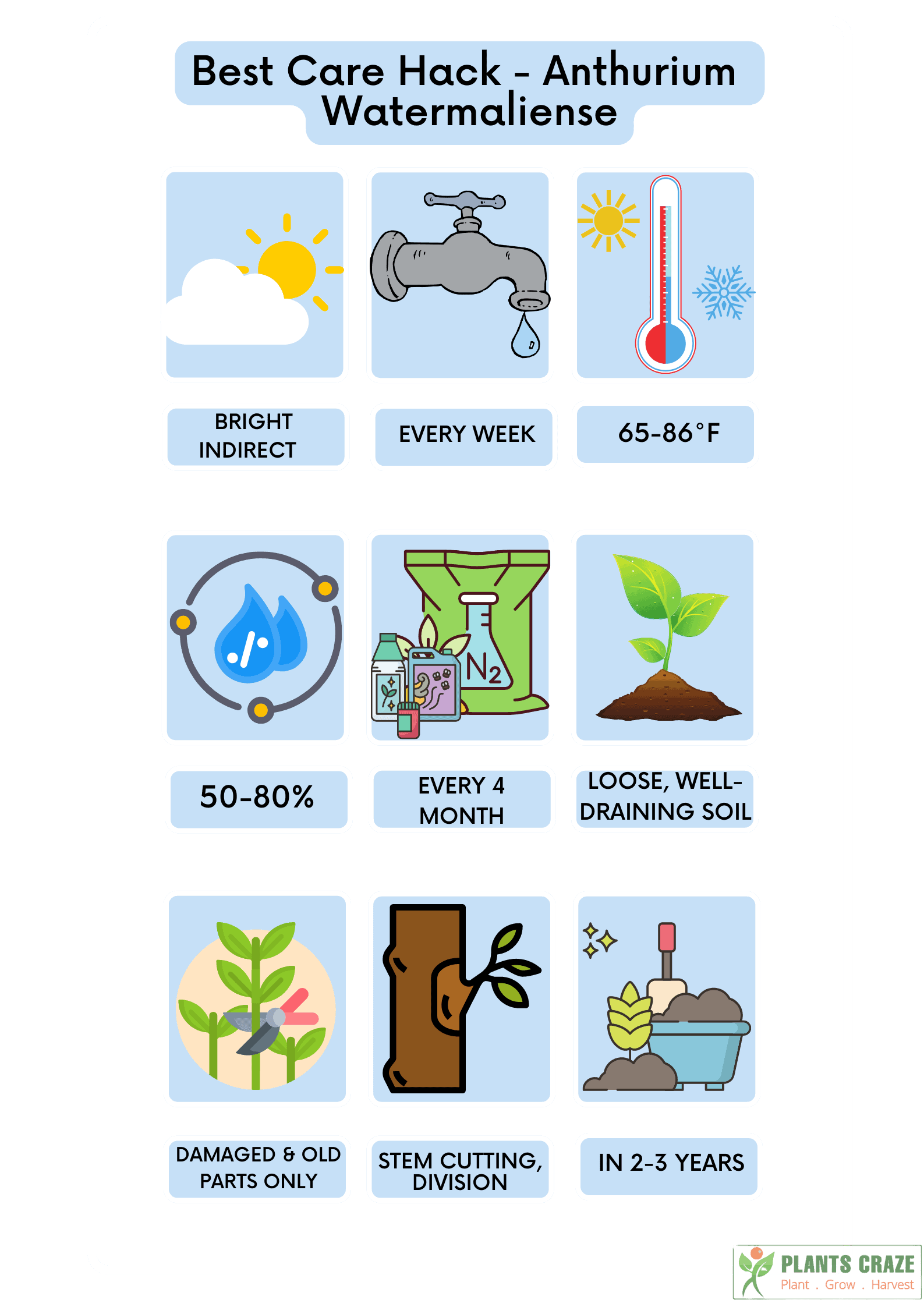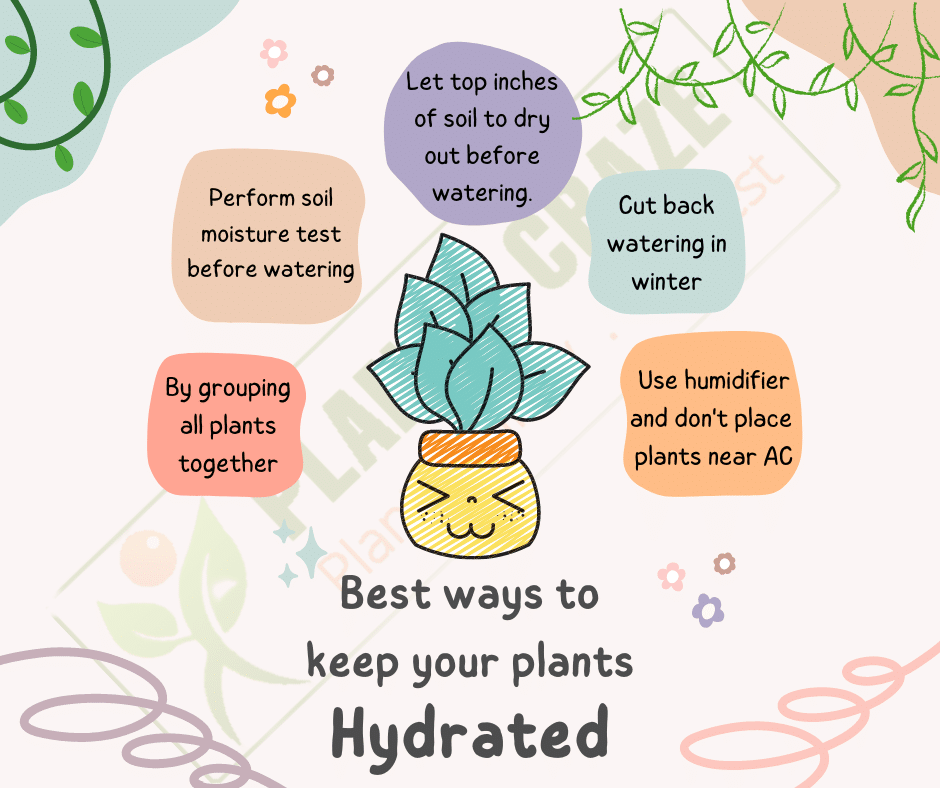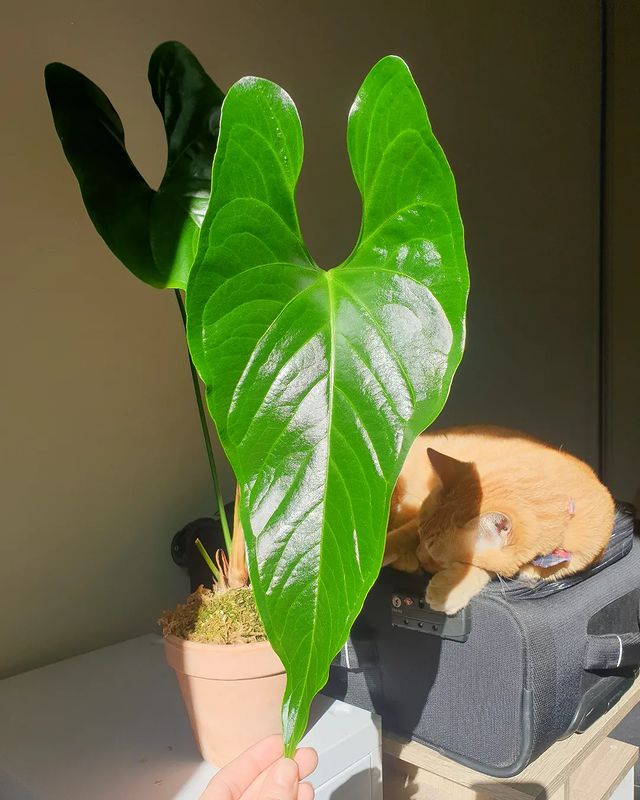The plant, Anthurium watermaliense, flowers even with minimal care. But the iconic purple hue of their blossom fades away under improper light and fertilization.
Although adaptable, you wouldn’t want to mess up and ruin precious black flowers. Thus, read on to learn a failsafe care routine for your Anthurium watermaliense.
Table of Contents Show
Overview of Anthurium Watermaliense
Anthurium watermaliense is an evergreen tropical plant hailing from Costa Rica and Columbia.
They are known as ‘black Anthurium’ and ‘black prince’ because of their alluring black flowers.
| Indicator | Identity |
|---|---|
| Scientific Name | Anthurium watermaliense |
| Common Name | Black Anthurium, black prince |
| Growth Zone | 10-11 |
| Growth Rate | Moderate |
| Growth Habit | Epiphytic perennial evergreen |
| Growth Size | 2 to 3 feet tall |
| Grown For | Foliage and blossoms |
| Foliage | Color: Dark green, waxy, heart shaped foliage Size: Up to 3 feet long. |
| Flowering Habits | Deep purple heart-shaped spathe with a spadix. |
| Toxicity | Toxic to both animals and humans |
| Common pests | Mealy bugs, aphids, spider mites |
| Common Diseases | Leaf spot and root rot |
Anthurium Watermaliense: A Complete Care Guide
Let us bring out the best of your low-maintenance Anthurium watermaliense with a comprehensive care guide, shall we?

1. Sunlight & Temperature
Anthurium watermaliense stays happy in an indirectly sunlit room of warmth ranging from 65-86°F.
If a south window is the only option, place them a few feet away to avoid direct sunburn.
Direct sunlight and high temperature cause the plant to dehydrate much faster. Sunburnt leaves are generally dry, crispy, yellow, curling, and limpy.
Meanwhile, deep shade and cold drafts (<55°F) also push back the plants’ growth and cause leggy & brittle foliage growth.
Therefore, aim to use incandescent lamps, heat pads, or frost blankets to keep them warm. Similarly, use sheer curtains to filter light.
2. Watering & Humidity
Anthurium watermaliense is a tropical evergreen that prefers humid, moist conditions.
Does your black Anthurium have yellowing leaves, rotten roots, and molds on top of the soil with slimy stems?
If so, you must have been overwatering and keeping excess humidity for a long time.
However, leaf curling, wilting, and drooping are the signs of lack of water and humidity <40%.

Therefore, to avoid mishaps, aim for bottom watering and add pebbles so your plant stays hydrated.
Alternatively, water your Anthurium only after the top 1.5 inches of soil turns dry. Or you can rely on a soil moisture meter and humidifier.
3. Soil & Fertilizer
Like Anthurium warocqueanum, black Anthurium can grow just fine in soilless sphagnum moss mix.
You can prepare an ideal potting mix by adding peat, perlite, compost, and bark. Otherwise, buy SuperMoss or organic mix.
Moreover, feed them phosphoric fertilizers to get more pronounced black Anthurium blossoms.
Lack of nutrients in the soil results in wilting, droopy leaves with very slow growth. However, excess fertilizer triggers root burn and salt build-ups.
Thus, remember to dilute the liquid fertilizer to avoid chemical burns. Meanwhile, apply slow-release fertilizers 4-6 inches away from the stem.
4. Potting & Repotting
Anthurium watermaliense does not need frequent repotting if they are staying at a 10″ to 20″ wide pot.
Rootbound condition stunts plant growth and often contributes to waterlogging issues.
While repotting, choose 2″ bigger terracotta pots than older ones with drain holes. Also, untangle the roots and prune off damaged parts.
Similarly, loosen the soil by soaking them the night before repotting to reduce repot stress.
5. Pruning
Unless Anthurium watermaliense becomes out of shape, they do not require regular pruning.
However, pruning damaged, dead, or decaying parts from pests or fungal infections is beneficial.
Alongside pruning, apply neem oil and fungicides to control pests and prevent further damage.
Spring and summer are ideal for pruning Anthurium into the desired shape using sterilized pruners.
Anthurium Watermaliense: All About Growth
Anthurium watermaliense, under ideal care, can grow 3 feet tall with broad, waxy green leaves.
Comparatively, the leaves outgrow the plants’ overall height. Matured leaves alone can get over 3 feet long.
Not only do the dark green elongated leaves have aesthetic value, but they also are efficient air purifiers.
Unlike many aroid houseplants, Anthurium watermaliense blooms exquisitely under ideal care.

Once the plant reaches maturity (3-4 years), they produce deep purple blossoms in a heart shape all year round.
They are identical to the typical Philodendron flower but more long-lasting(2-3 months) than them.
Furthermore, Anthurium watermaliense bears higher Feng Shui significance. It is believed that they attract positivity and bring luck.
After successful pollination, these showy flowers produce berrylike yellow fruits that ripen within 7 – 8 months.
The ripened fruits can be used to harvest seeds and for further propagation, as in the seeds of Monstera.
However, you should not eat them like deliciosa fruit, as they are non-edible.
Toxicity of Anthurium Wateraliense
According to ASPCA, Anthurium watermaliense is toxic to pets and humans.
If ingested in large amounts, severe swelling of the respiratory tract can occur, causing breathing difficulties.
Thus, cautiously place the plant so your pets and kids cannot reach there.

Just in case your pets took a nibble out of the plant, give them milk to soothe the burning sensation in the mouth.
Here are some helpline numbers to seek professional help during Anthurium poisoning.
- ASPCA Animal Poison Control Center: (888) 426-4435
- Poison Control Helpline: (800) 222 1222
Propagation Methods for Anthurium Watermaliense
You can propagate Anthurium watermaliense via stem cuttings and division.
Although propagation via seeds is also possible, it is not recommended due to its time-consuming and low-success rate.
But consider propagating your black Anthurium in spring and summer, regardless of the approach.
Before hopping into the train of propagation steps, ensure you have rooting hormone, shear and potting mix.
1. Stem Cutting
Get a healthy stem with several nodes and make a 3-5″ long clean cut at a 45° angle below the node.
- Partially dip the cutting in rooting hormone and water.
- Ensure the leaf is not touching the water.
- Place the jar in a bright, warm, and humid place.
- Wait for a month to see new root growths.
- Once new roots grow over an inch long, transplant them in a fresh potting mix.
Similarly, once callus forms on the cut end, you can also directly plant the cutting in a fresh soil mix.
To encourage faster root growth, keep the soil moist but not soggy. Within a month or two, you can notice new root sprouts.
2. Division Method
While repotting Anthurium watermaliense, you can divide the healthy roots to populate.
Before cutting roots, ensure to untangle and clean them off properly. With the help of sterilized shears, divide the root and make sure each of them has at least one stem.
Now, plant those individual divided roots in a regular but fresh potting mix. Ensure to keep them moist to boost growth.
Once the divided roots adjust, new growth will be visible within 4-5 weeks. Then, proceed with a regular care routine.
Anthurium Watermaliense for Sale
Anthurium watermaliense is a rare yet stoic plant that lasts with you for five years or more.
Here I have enlisted a few verified online stores with watermaliense for sale.
| Places To Buy | Delivery |
|---|---|
| Etsy | Within 3 to 7 business days |
| Ecuagenera | Ships within 2-3 days |
| Plant Salon | Within a week |
| NSE Tropicals | Takes almost a week |
| Gabriella Plants | Within 7 working days |
Wrapping Up…
Anthurium watermaliense does not have advanced care needs, making it an ideal plant for beginners.
Give them basic care, and they will reward you back with exotic blooms throughout the year while cleaning the room air for free.
All The Best!


